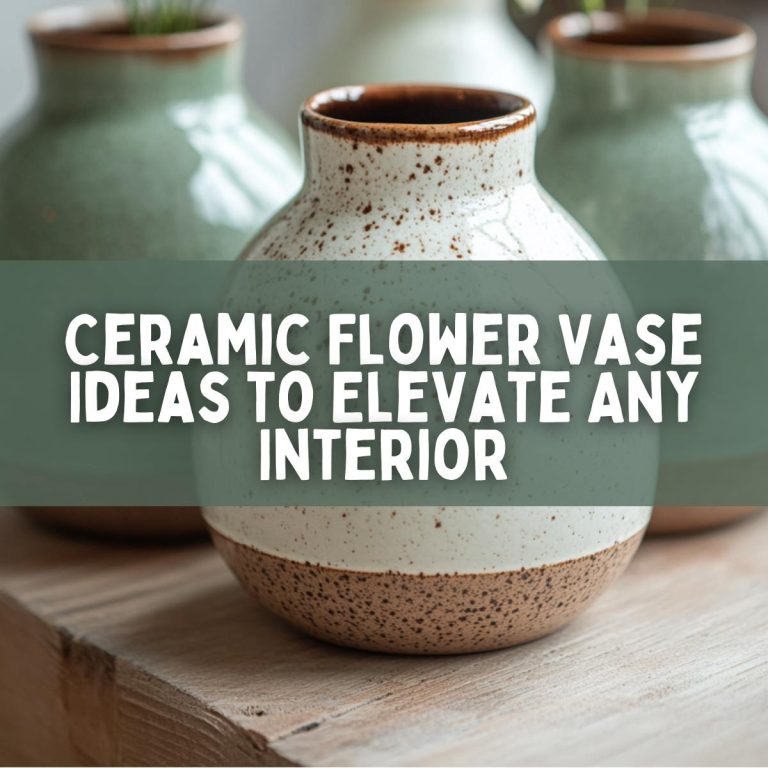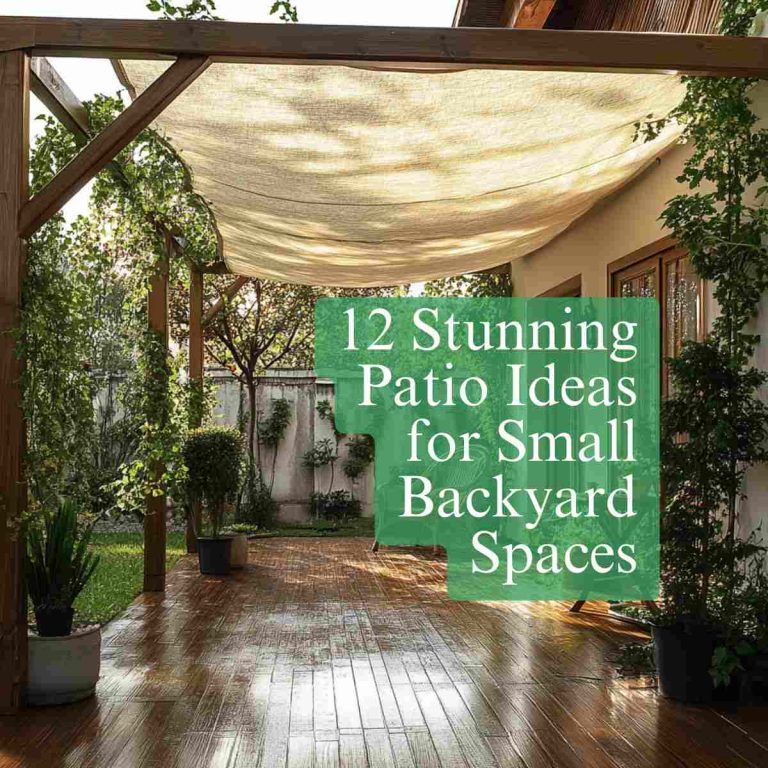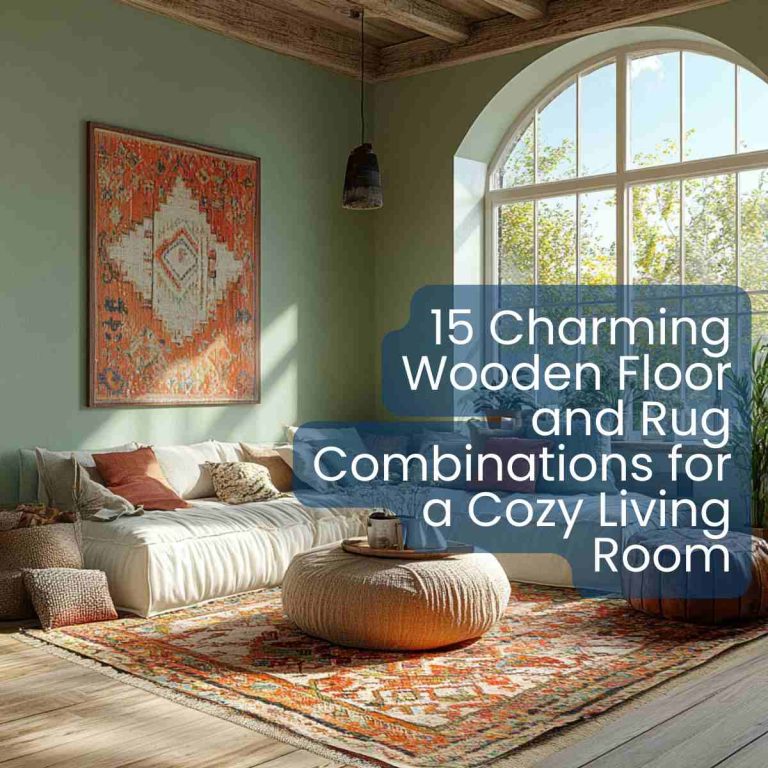Small Bedroom Ideas with a Minimalist Design Approach
In an increasingly fast-paced and cluttered world, more and more people are turning to minimalism as a way to restore clarity and calm in their everyday lives. Minimalism isn’t just a design trend—it’s a lifestyle that emphasizes simplicity, purpose, and intentionality. When applied to interior design, particularly in small bedrooms, it can create serene, functional sanctuaries that feel open, breathable, and refreshingly uncomplicated.
Small bedrooms pose unique challenges—limited space, storage issues, and the tendency for clutter to accumulate quickly. But they also offer an ideal canvas for minimalist design. With the right approach, even the tiniest room can be transformed into a beautifully balanced space that promotes rest and clarity.
This article will guide you through a variety of minimalist design strategies specifically tailored for small bedrooms. From layout planning to color palettes, smart storage, and curated decor, you’ll find actionable ideas to help you simplify without sacrificing comfort or style.
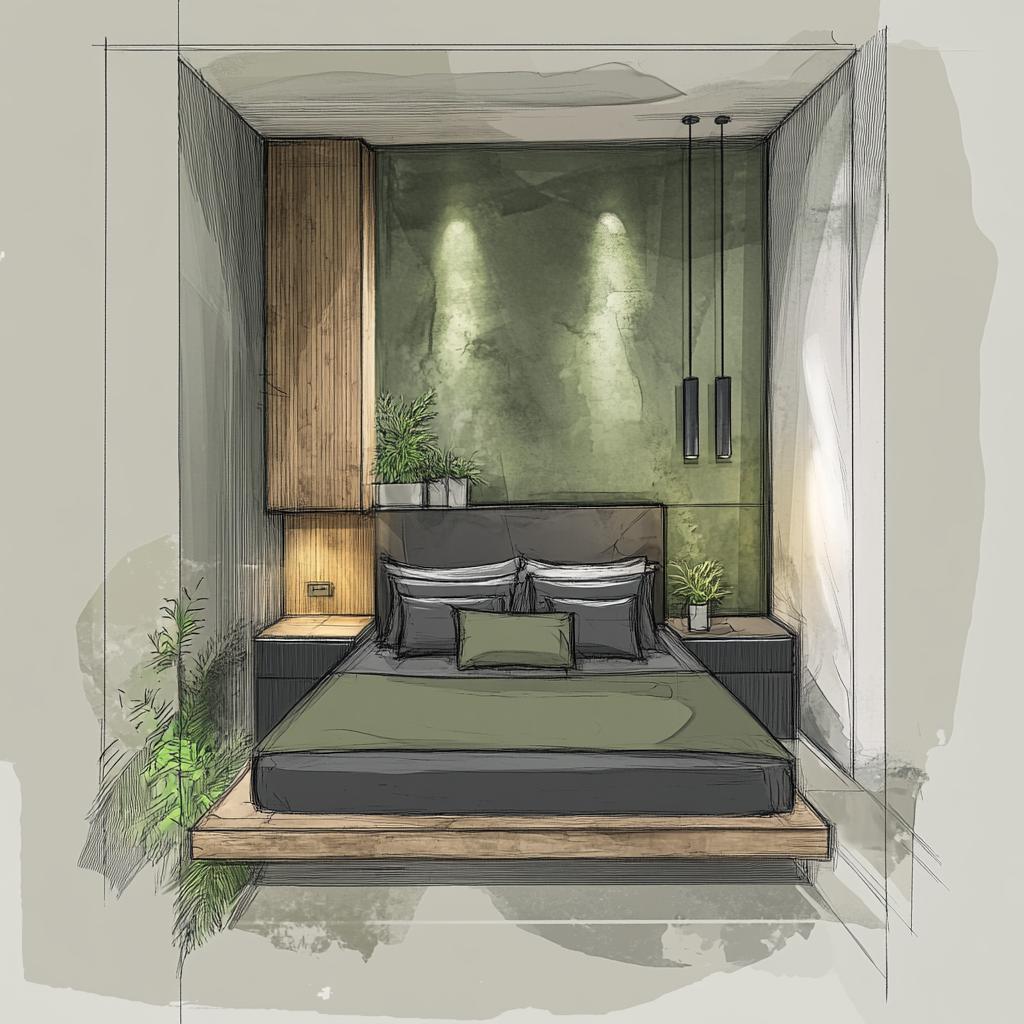
Understanding Minimalism in Interior Design
At its essence, minimalism is about stripping away the non-essential to focus on what truly matters. It’s a philosophy that originated in post-World War II art and design movements, heavily influenced by Japanese Zen aesthetics and Scandinavian simplicity.
Core Principles of Minimalist Design
- Simplicity: The design avoids ornate details and focuses on clean lines, open spaces, and visual calm.
- Functionality: Every piece of furniture and decor serves a clear purpose.
- Intentionality: Items are carefully chosen, reducing clutter and promoting mindfulness.
- Harmony: Colors, shapes, and proportions work together to create balance.
In a small bedroom, this means choosing fewer, better things and organizing the space in a way that supports a peaceful, clutter-free lifestyle.
Planning Your Minimalist Small Bedroom
Before you start redecorating, take time to thoughtfully plan your space. Minimalist design may look effortless, but it relies heavily on smart decision-making and purposeful layout.
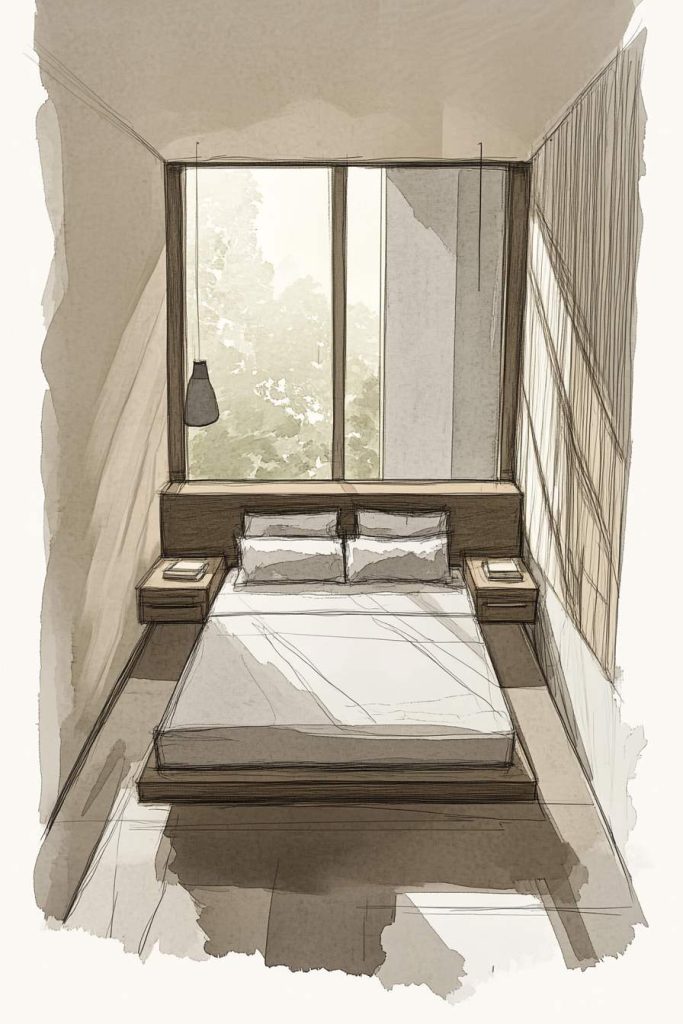
Steps to Get Started
- Measure your room: Note the dimensions, ceiling height, window placement, and any built-in elements.
- Define your needs: Do you need extra storage? A workspace? A place to read or meditate?
- Visualize your goal: Create a mood board using Pinterest or design apps. Stick to themes that emphasize light, airiness, and functionality.
- Declutter first: Before adding anything new, pare down what you already have. Remove items that are broken, outdated, or unused.
A successful minimalist bedroom begins with subtraction, not addition.
Choosing a Minimal Color Palette
Color is one of the most powerful tools in minimalist design, especially in small spaces. The right palette can make a cramped room feel expansive and tranquil.
Recommended Color Schemes
- Neutrals: White, off-white, light gray, beige, and soft taupe form the foundation of most minimalist rooms.
- Monochromatic tones: Choose a single base color and vary its shades for depth without overwhelming the eye.
- Earth-inspired colors: Muted greens, terracotta, clay, or soft blues add subtle warmth while keeping things grounded.
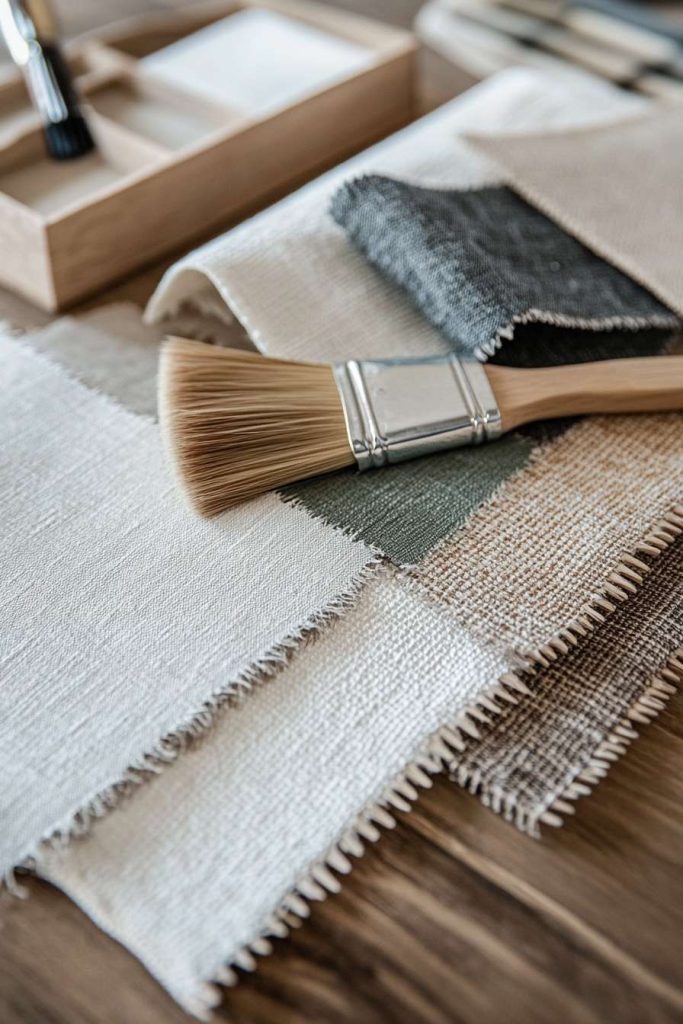
Avoid high-contrast, busy patterns or overly vibrant hues. If you love color, introduce it through a single accent wall, pillow, or art piece. The goal is to create a cohesive, visually light atmosphere.
Selecting the Right Furniture
Furniture in a minimalist bedroom must be both beautiful and practical. Opt for pieces that are essential, sleek, and scaled appropriately to the room.
Smart Furniture Choices
- Platform or low-profile beds: These beds create an illusion of higher ceilings and more space.
- Floating nightstands: Wall-mounted tables free up floor space and give the room a lighter look.
- Compact wardrobes or armoires: Choose storage units with clean lines and hidden handles for a seamless appearance.
- Multipurpose furniture: Look for beds with built-in drawers, benches with hidden storage, or desks that fold into the wall.
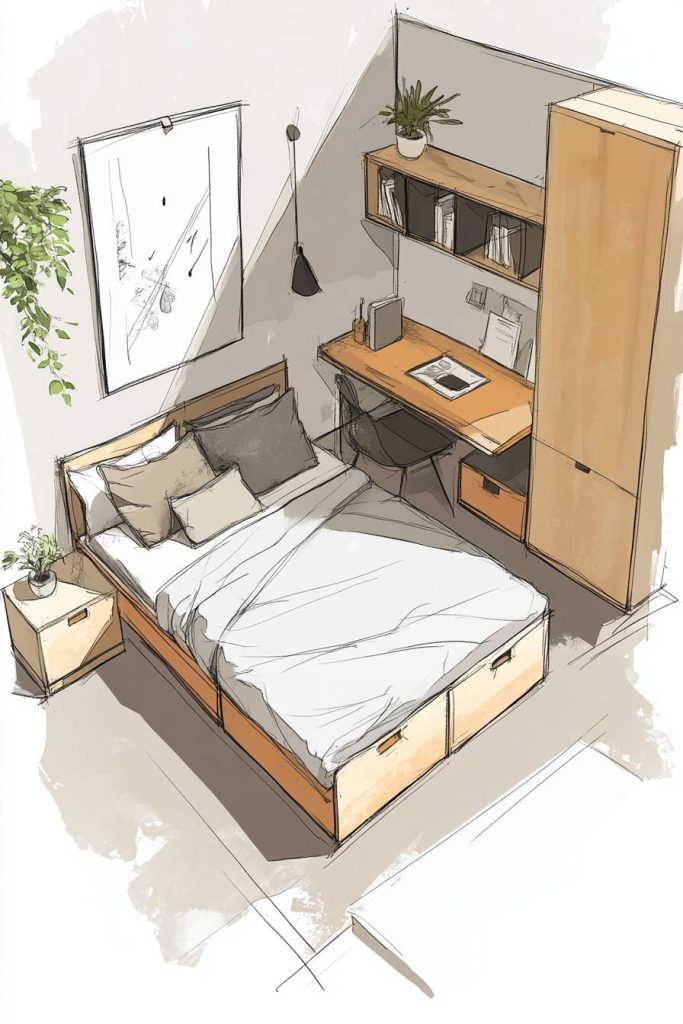
Stick with solid colors or natural wood tones. Avoid ornate carvings or heavy, bulky silhouettes.
Storage Solutions that Keep Clutter Hidden
Storage is critical in small bedrooms. The minimalist goal isn’t to get rid of everything—it’s to store items wisely and invisibly.
Ideas for Hidden Storage
- Under-bed drawers: Utilize the space beneath your bed for off-season clothes, linens, or shoes.
- Built-in wardrobes: Floor-to-ceiling closets reduce the need for additional furniture.
- Storage ottomans or benches: Perfect for seating and stashing throw blankets or extra pillows.
- Wall-mounted cubbies or organizers: Great for small items, but keep surfaces clean and uniform.
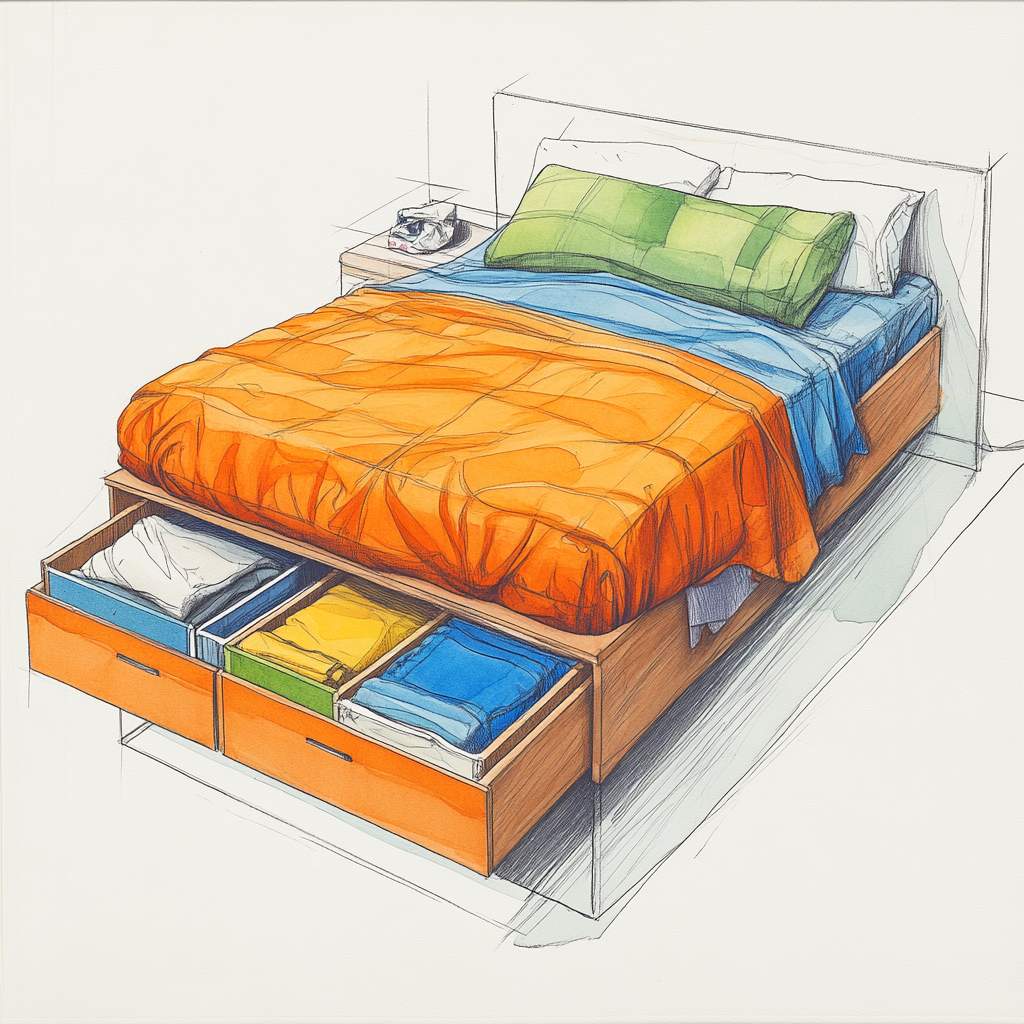
Use matching storage containers and labels to create a tidy, uniform appearance. Visual chaos, even inside drawers, can undermine minimalist serenity.
Maximize Vertical Space
When floor space is scarce, think vertically. Utilizing wall height allows you to maintain open floor space while still gaining functionality.
Vertical Solutions for Small Rooms
- Floating shelves: Ideal for books, small plants, or a few carefully chosen décor items.
- Tall, slim wardrobes: Instead of wide furniture, opt for height to store more in less space.
- Hooks and pegboards: Use these to hang bags, accessories, or even clothing in a stylish, organized way.
- Lofted beds: In ultra-small rooms, consider a loft bed to open up the space below for a desk or reading nook.

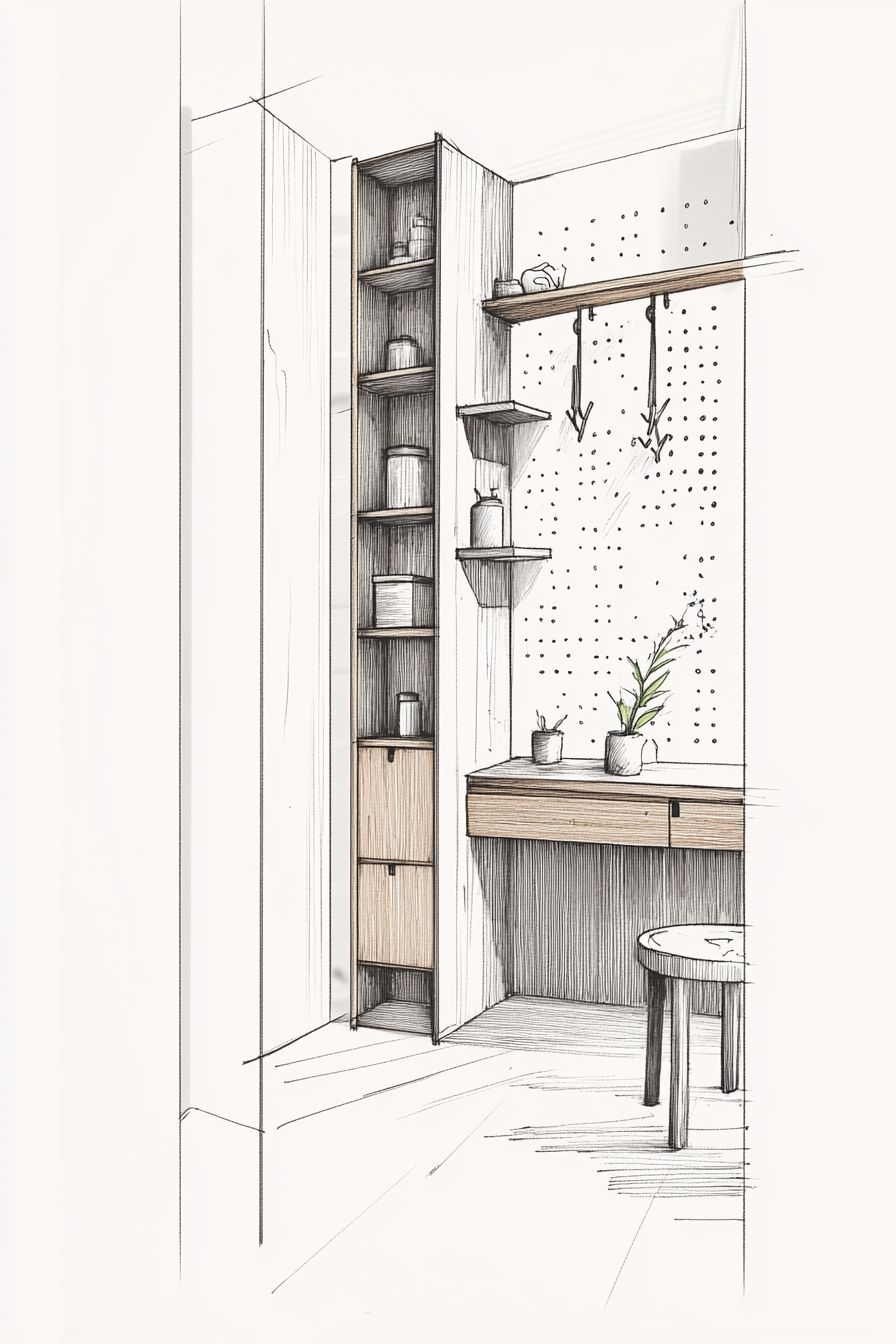
Always ensure vertical additions are aligned, proportional, and visually light.
Lighting the Space Right
Good lighting is essential in a minimalist small bedroom. It can completely alter how spacious and inviting a room feels.
Tips for Bright, Airy Lighting
- Maximize natural light: Keep window coverings light and airy—opt for sheer curtains or blinds.
- Layer lighting: Use a mix of ambient (ceiling lights), task (bedside lamps), and accent lighting (LED strips or sconces).
- Minimalist fixtures: Choose designs with slim profiles, matte finishes, and clean lines.
- Mirrors: Strategically placed mirrors reflect light and create the illusion of more space.
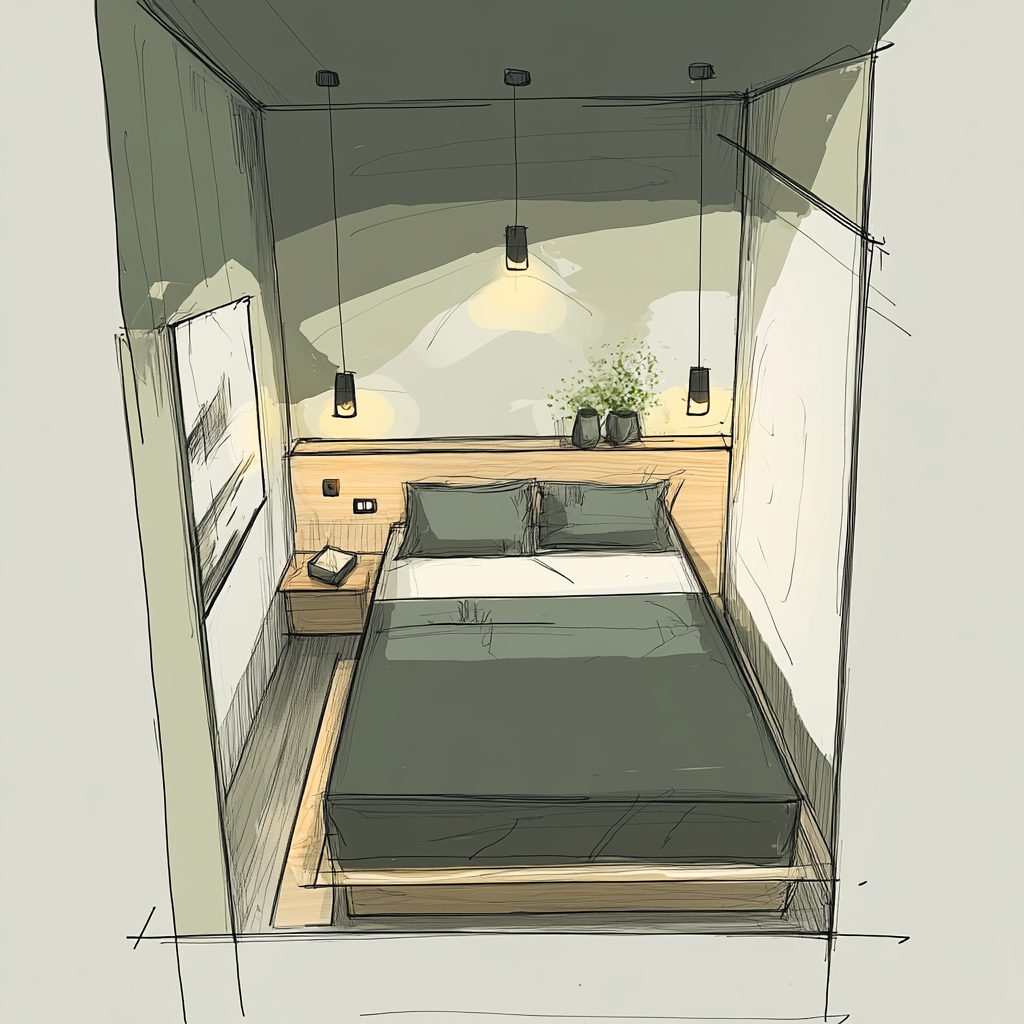
Avoid bulky lampshades or ornate chandeliers. Keep it clean, bright, and purposeful.
Textures and Materials: Less But Better
Minimalist design may be low on visual clutter, but it’s rich in tactile appeal. Texture brings warmth and depth to the space without overwhelming it.
Go-To Materials for Minimalist Warmth
- Natural fibers: Linen bedding, cotton throws, and wool rugs offer subtle variation and softness.
- Wood accents: A raw wood headboard or bench introduces organic texture.
- Stone and ceramic elements: Use in lamp bases or decor for quiet contrast.
Aim for three to four textures across the room and repeat them to create rhythm. Too many competing materials can feel disjointed and noisy.
Art and Décor: Curated, Not Cluttered
Minimalist doesn’t mean blank. It means intentionality—each piece of décor serves a purpose and contributes to the space’s emotional tone.
Thoughtful Decorative Choices
- One statement piece: A large piece of wall art or a sculptural object can be more impactful than multiple small ones.
- Muted color palettes: Art in calming tones works better than bold, busy graphics.
- Personal items with meaning: A framed photo, a favorite book, or a small heirloom adds warmth and story.
- Plants: A single potted plant or a hanging planter adds life and freshness with minimal effort.
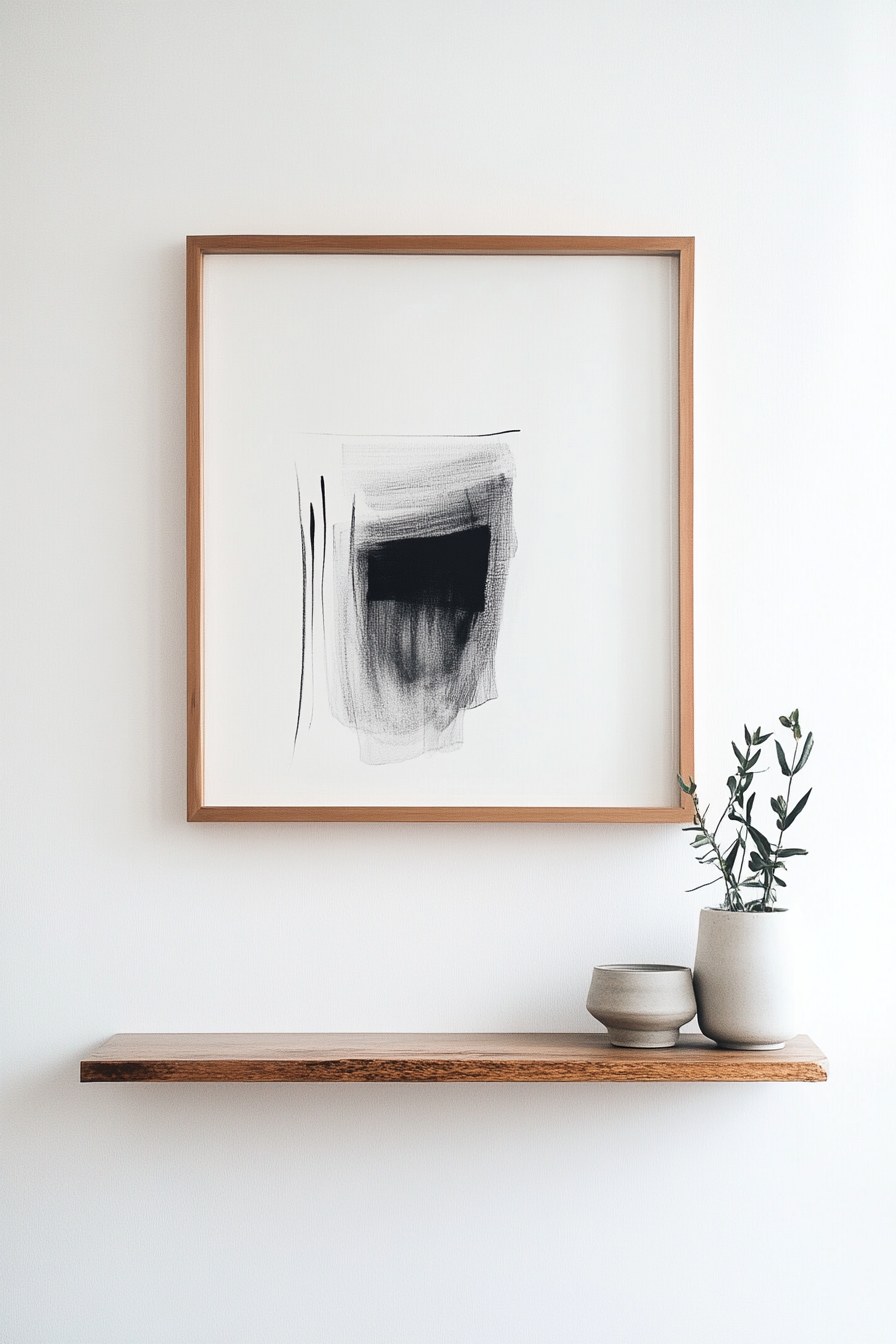
Stick to symmetry and negative space when decorating—let each object breathe.
The Role of Technology in a Minimalist Bedroom
Tech can easily clutter a small room—but it can also enhance functionality when used wisely.
Smart Tech for Minimalist Living
- Cable management systems: Hide cords with wall-mounted tracks or under-desk organizers.
- Smart lighting: Use voice-activated bulbs or dimmable LEDs to control mood and energy efficiency.
- Invisible tech: Mount TVs flush with the wall or hide them behind panels.
- All-in-one charging stations: Keep devices organized and off the floor or nightstand.
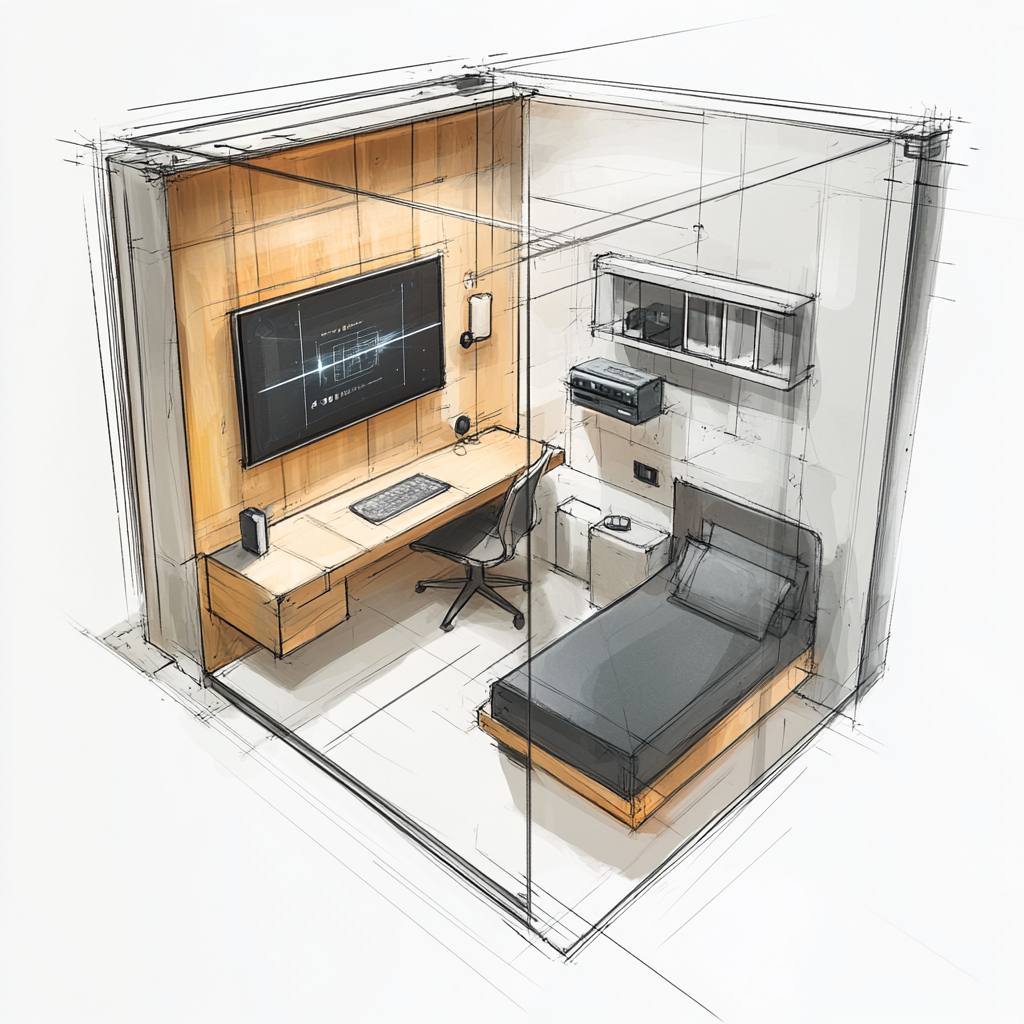
Avoid unnecessary gadgets. Streamline and simplify to reduce digital clutter.
Minimalist Design for Shared Small Bedrooms
Designing for two in one space can be tricky, but minimalism helps keep things cohesive and clutter-free.
Tips for Shared Small Spaces
- Symmetry: Match bedding, storage, and lighting on both sides of the room.
- Bunk or loft beds: Maximize vertical real estate.
- Clear boundaries: Use area rugs, wall colors, or shelving to define individual spaces subtly.
- Shared storage systems: Use modular cubes or color-coded baskets for personal organization.
Open communication about keeping the room tidy is essential when sharing a minimalist space.
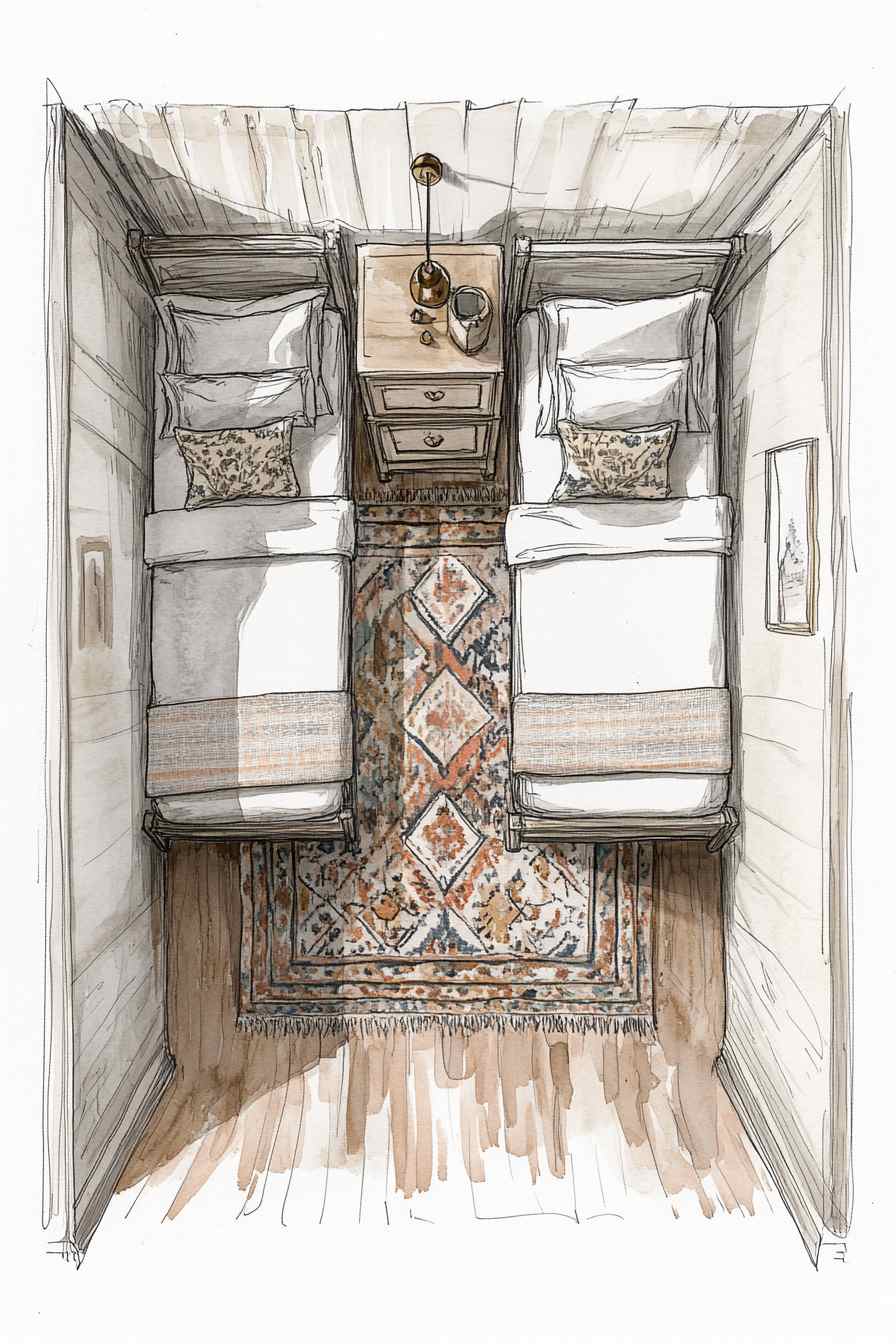
DIY and Budget-Friendly Minimalist Ideas
Minimalist design doesn’t have to break the bank. With some creativity, you can build a minimalist bedroom that’s both affordable and stylish.
Ideas for Minimalist Design on a Budget
- Thrift and upcycle: Paint old furniture in neutral tones, replace hardware with modern knobs.
- DIY art: Frame pressed leaves, black-and-white photography, or abstract prints you create yourself.
- Declutter instead of redecorating: Sometimes all a space needs is a fresh edit.
- Use affordable retailers: IKEA, Muji, or second-hand online shops offer great minimalist pieces at lower prices.
Minimalism is more about mindset than money.
Maintaining the Minimalist Look Over Time
Even the best-designed space will lose its edge without regular upkeep. Maintenance is essential for preserving minimalist clarity.
Easy Maintenance Routines
- Daily resets: Make your bed, clear your surfaces, and put away items.
- Weekly decluttering: Spend 10–15 minutes reviewing surfaces and storage.
- Seasonal audits: Review clothes, accessories, and décor every three months.
- One in, one out: For every new item you bring in, remove one.
Minimalism is not a destination—it’s a continuous process of simplification.
Real-Life Examples and Case Studies
Let’s look at a few inspiring minimalist small bedroom designs in action:
Case Study 1: Scandinavian Micro-Apartment
A 10×10 bedroom in Copenhagen features a platform bed with drawers, white walls, a single oversized art print, and wall-mounted lighting. Everything has a place. Nothing feels cramped.

Case Study 2: Japandi-Inspired Tiny Room
In Tokyo, a renter converted a 90-square-foot space into a Zen-like retreat using a futon, bamboo shelves, rice paper lanterns, and calming taupe walls.
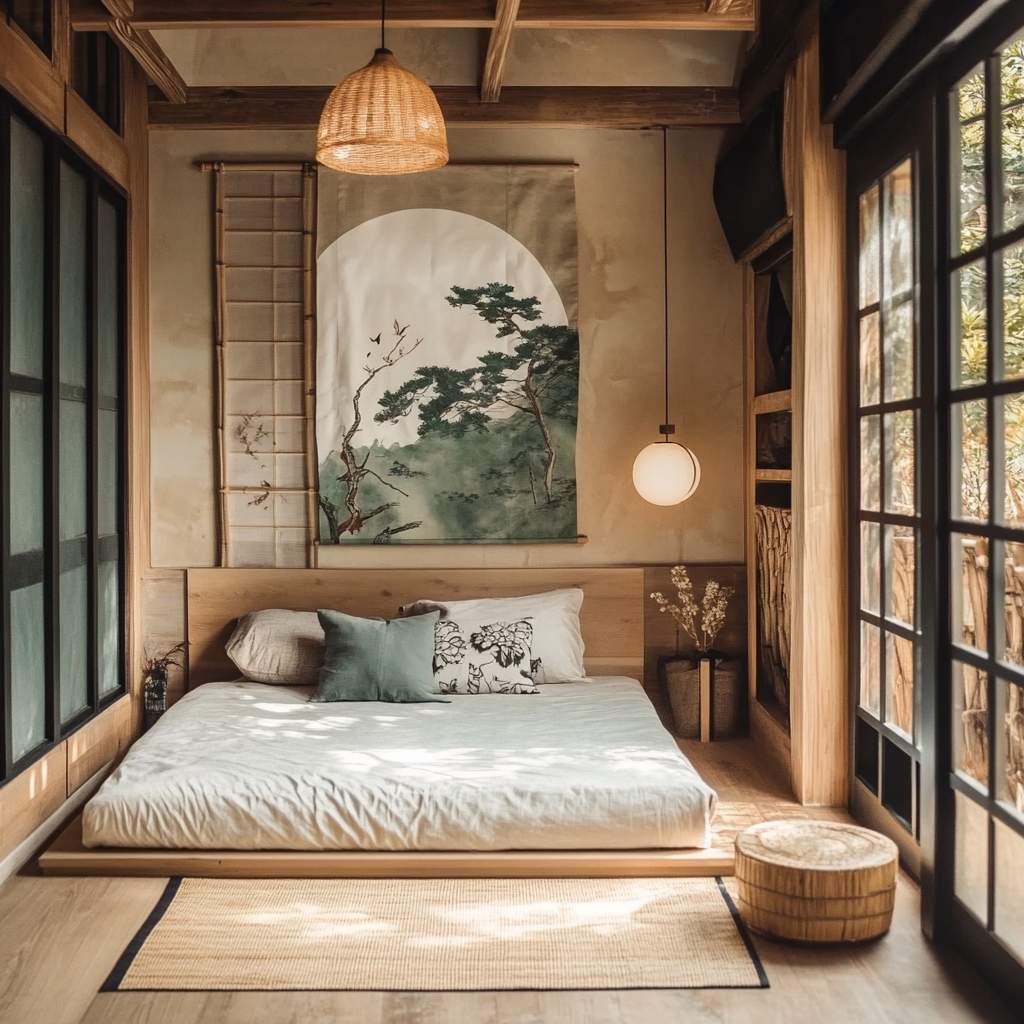
Case Study 3: Shared Minimalist Kids’ Room
Two siblings in a shared room use bunk beds, color-coded under-bed bins, and wall-mounted bookshelves to keep the space tidy and personal.
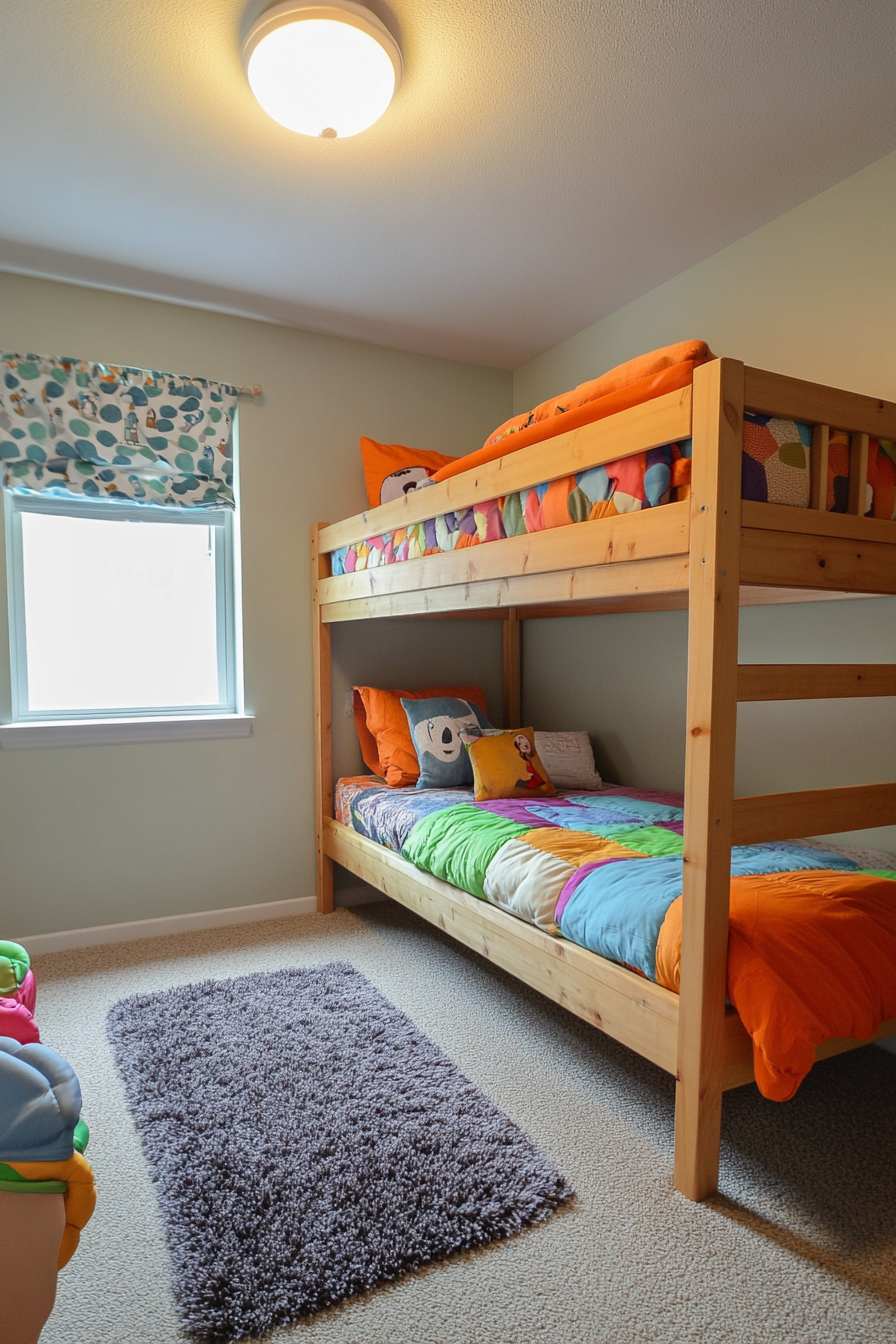
These examples prove that size doesn’t limit style—it enhances it when approached mindfully.
Final Touches and Personalization
Minimalism isn’t about sterile perfection—it’s about balance and comfort. Add just enough personality to make the space feel like home.
Finishing Touches to Consider
- Scent: Use essential oil diffusers or a single soy candle to create ambiance.
- Softness: Layer in a textured throw or a plush rug.
- Mood lighting: Use warm light tones and dimmers for evening relaxation.
- Personal artifacts: Choose items with emotional value that fit the room’s palette.
Ultimately, a minimalist small bedroom should reflect you—just the essential, thoughtful, beautifully edited version.
Wrapping Up
A small bedroom doesn’t have to feel cramped, cluttered, or chaotic. With a minimalist design approach, even the most modest space can be transformed into a tranquil, organized retreat that promotes clarity of mind and quality rest. By focusing on simplicity, functionality, and intentional aesthetics, you can create a room that not only looks beautiful but also supports a more peaceful and purposeful lifestyle.
From smart furniture choices and concealed storage to muted color palettes and carefully curated décor, minimalist design offers endless potential for elevating small spaces. It’s not about sacrificing comfort or personality—it’s about removing the unnecessary so the truly meaningful can shine.
✅ FAQ: Small Bedroom Minimalist Design
What is the best bed for a minimalist small bedroom?
A platform bed or a low-profile frame with built-in storage is ideal. Avoid bulky headboards or overly ornate designs.
How do I make a small bedroom look bigger?
Use light colors, mirrors, minimal furniture, and vertical storage. Maximize natural light and keep floor space as open as possible.
Can a minimalist room still feel cozy?
Yes! Use textures like linen and wool, warm lighting, and a few personal touches to add warmth without clutter.
How much furniture should be in a minimalist bedroom?
Only the essentials: bed, nightstand, and one storage piece. Each item should serve a clear purpose.
What colors are best for a minimalist bedroom?
Neutral tones like white, beige, and gray. For warmth, incorporate muted earth tones like sage green or clay.


